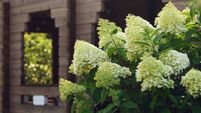Peter Dowdall: Garden design is more about editing than creating, so observe what it needs

Your garden's colour can bring joy in summer but its other characteristics, including texture, are also important for year-round interest, says Peter Dowdall. File picture
All too often, we get completely engrossed in colour. And it’s understandable. Who doesn’t love the riot of blooms in May, June and July, when the garden is bursting with life and everything feels fresh and full of promise? But in our enthusiasm for flower colour, it’s easy to lose sight of something more fundamental, the actual design of the garden.
Colour is fleeting. It comes and goes with the seasons, often vanishing overnight in the face of wind or rain. What remains, though, are the bones of the garden, its structure, its textures and its more subtle touches.













